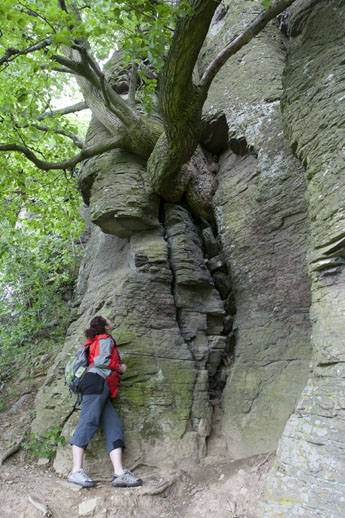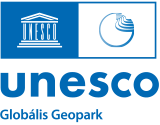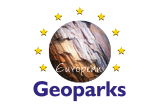What is a geopark?
 When talking about natural values and their protection respectively, even nowadays most people think about rain forests covered by mist, colourful birds and herbaceous plants having beautiful flowers. How can one like a cliff or a road-cut or the brittle and silent rocks?...The raising of the significance of abiotic natural values to the same rank as that of the above-mentioned ones (beyond the protection of caves) was not particularly well received at an international level; however, after a while, more and more voices spoke up for the importance of the protection and the demonstration of our geological heritage. The UNESCO’s Division of Ecological and Earth Sciences announced its Geopark Programme in 1997, and then in 2000 a committed group of French, German, Spanish and Greek experts established the European Geoparks Network, which today already has 52 members. A Geopark is a territory where numerous sites of geological and geomorphological values can be found. They are of outstanding significance from a scientific and educational point of view as well as having an aesthetic value, (if the word biodiversity was created for describing the variation of species and communities; can we not similarly use the word geodiversity?). Through sustainable geoturism, a Geopark — situated in an adequately large territory — would even be able to serve in the development of the local economy. One of the crucial tasks is to make the visitors and the local inhabitants realise the significance of the geological heritage. A Geopark would never lend a helping hand to those
When talking about natural values and their protection respectively, even nowadays most people think about rain forests covered by mist, colourful birds and herbaceous plants having beautiful flowers. How can one like a cliff or a road-cut or the brittle and silent rocks?...The raising of the significance of abiotic natural values to the same rank as that of the above-mentioned ones (beyond the protection of caves) was not particularly well received at an international level; however, after a while, more and more voices spoke up for the importance of the protection and the demonstration of our geological heritage. The UNESCO’s Division of Ecological and Earth Sciences announced its Geopark Programme in 1997, and then in 2000 a committed group of French, German, Spanish and Greek experts established the European Geoparks Network, which today already has 52 members. A Geopark is a territory where numerous sites of geological and geomorphological values can be found. They are of outstanding significance from a scientific and educational point of view as well as having an aesthetic value, (if the word biodiversity was created for describing the variation of species and communities; can we not similarly use the word geodiversity?). Through sustainable geoturism, a Geopark — situated in an adequately large territory — would even be able to serve in the development of the local economy. One of the crucial tasks is to make the visitors and the local inhabitants realise the significance of the geological heritage. A Geopark would never lend a helping hand to those
who make money selling geological values (for example selling fossils and minerals) nor to those who would damage these values. Emphasising the complexity, it is necessary to point out that in the area of the geoparks significant historical, cultural and ecological values can be found. The involvement of local communities and organisations is desirable (for example the local organisation for nature conservation can play an important role in the case of cleaning a ponor or an abandoned quarry from the dumped waste products). The council who is responsible for managing the Geopark will work out how their organisation can join the environmental education and scientific research work together with the co-operating partners. Moreover, it consistently carries out an operational plan, which explains in detail how the economical interests of local inhabitants can harmonise with the protection of the various natural and regional values. And last, but not least
geoparks, as members of the international networks, keep close contacts with the co-organisations, and they mutually call the visitors’ attention both to the values introduced by the partners and their activities. Thus, it is to be seen that a geopark is not a protected area with new restrictions, it is not only a geo-scientific park and not only a collection of geological key sections and nature trails.









